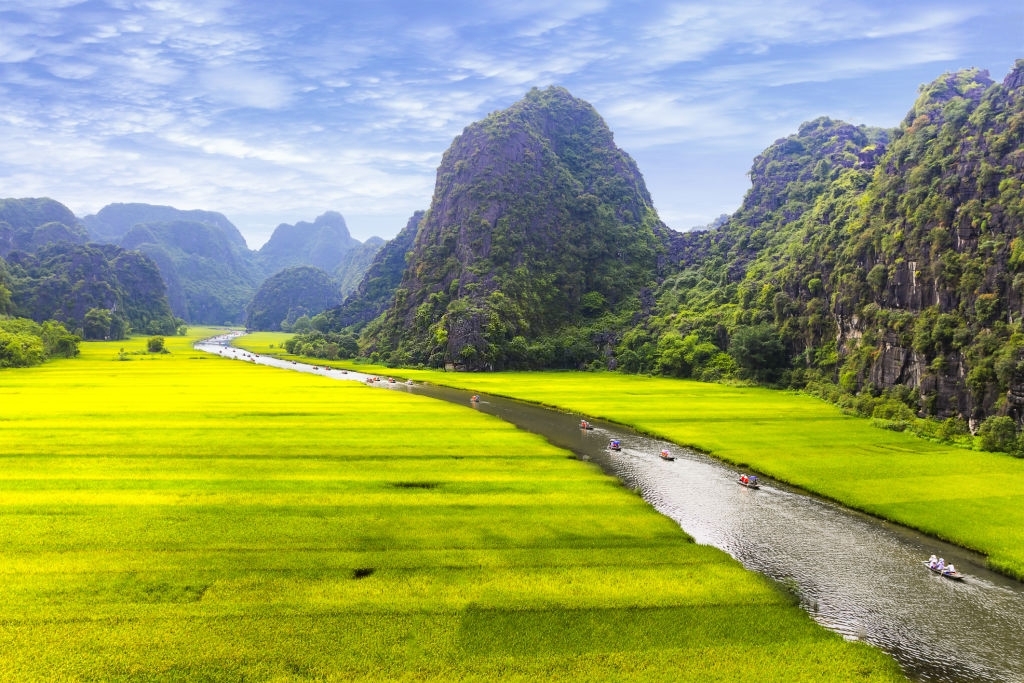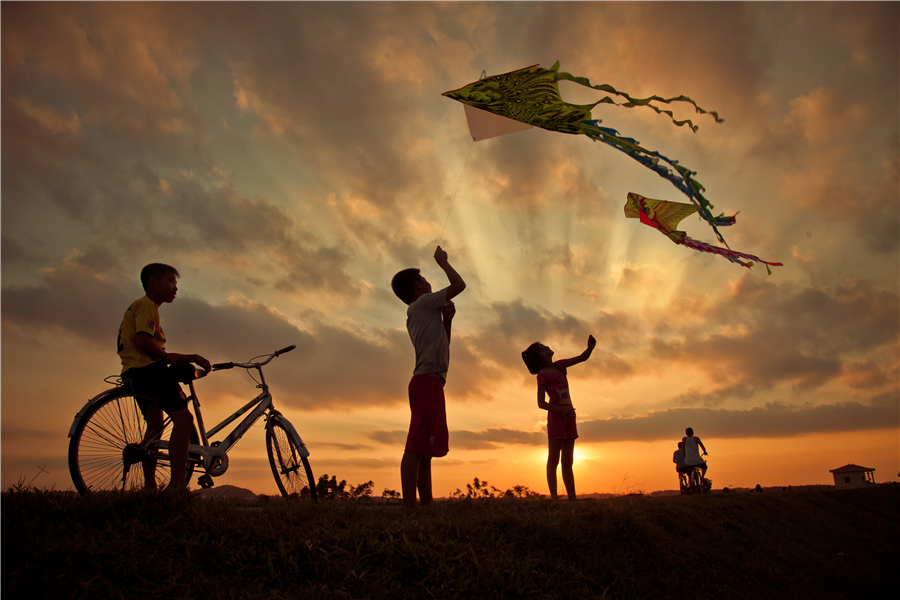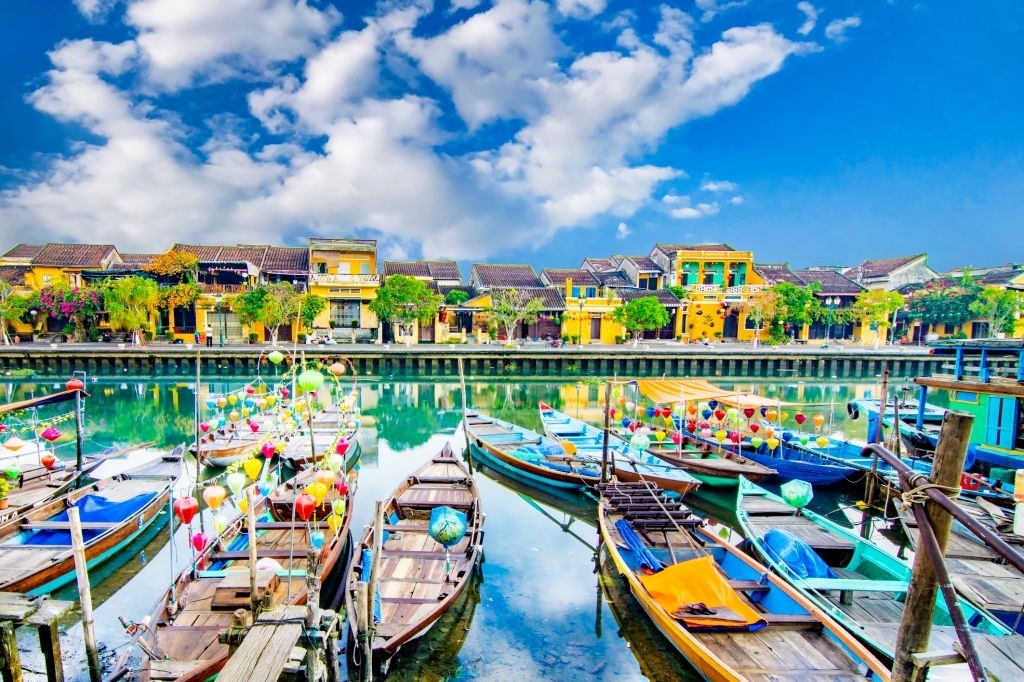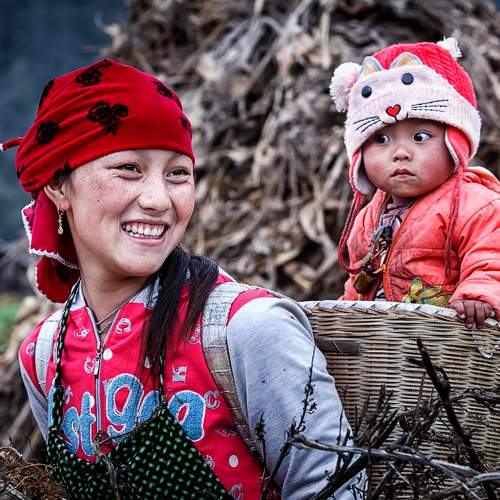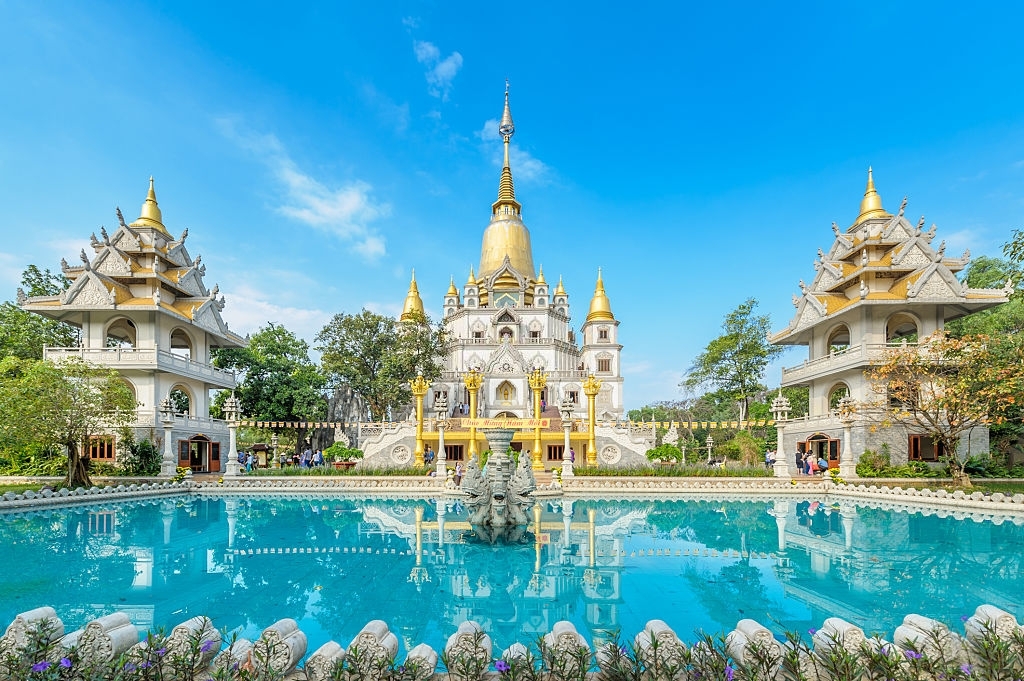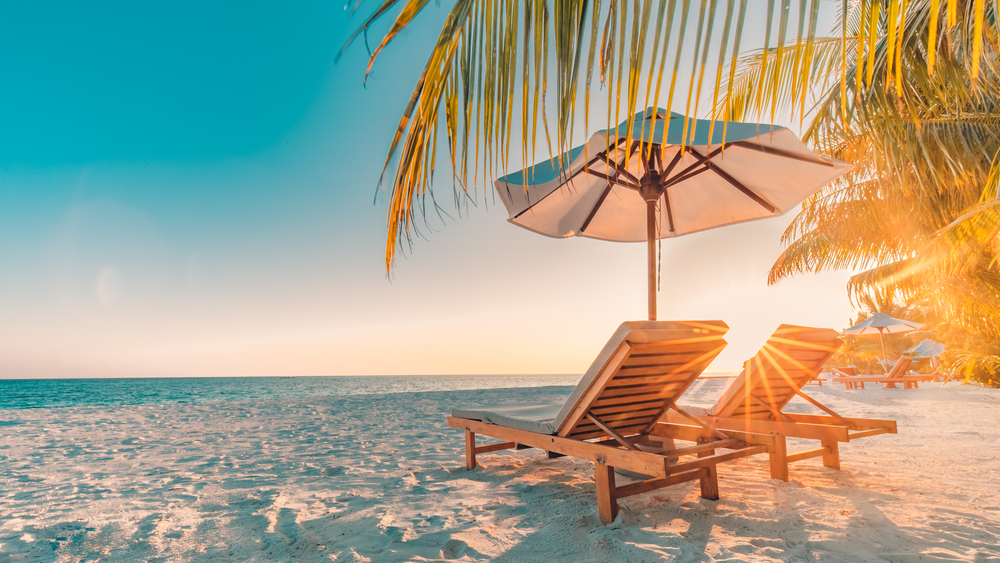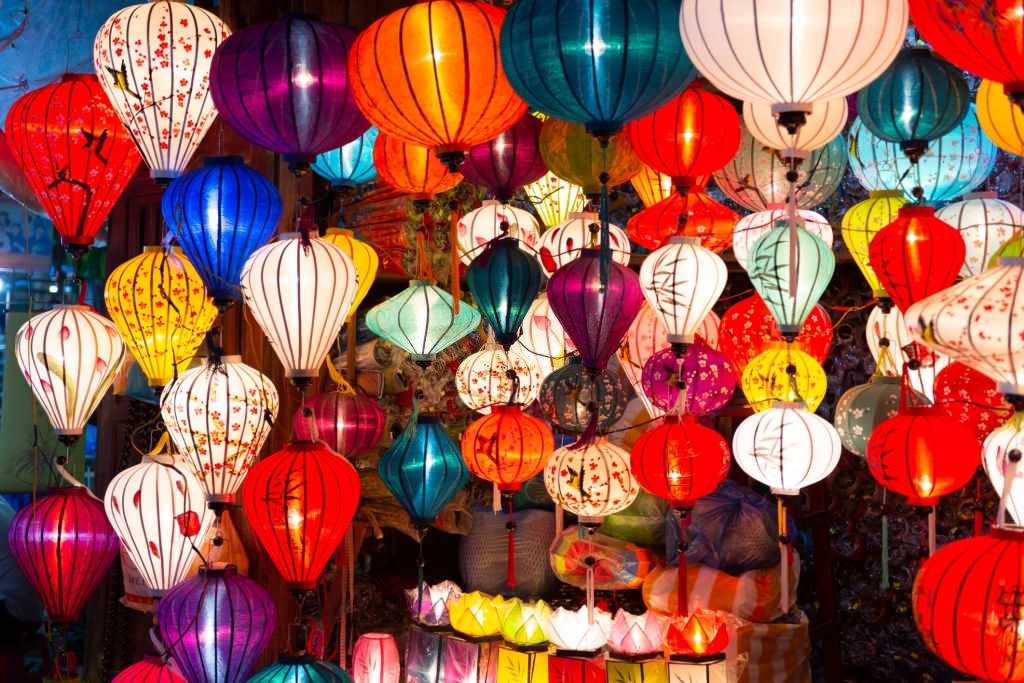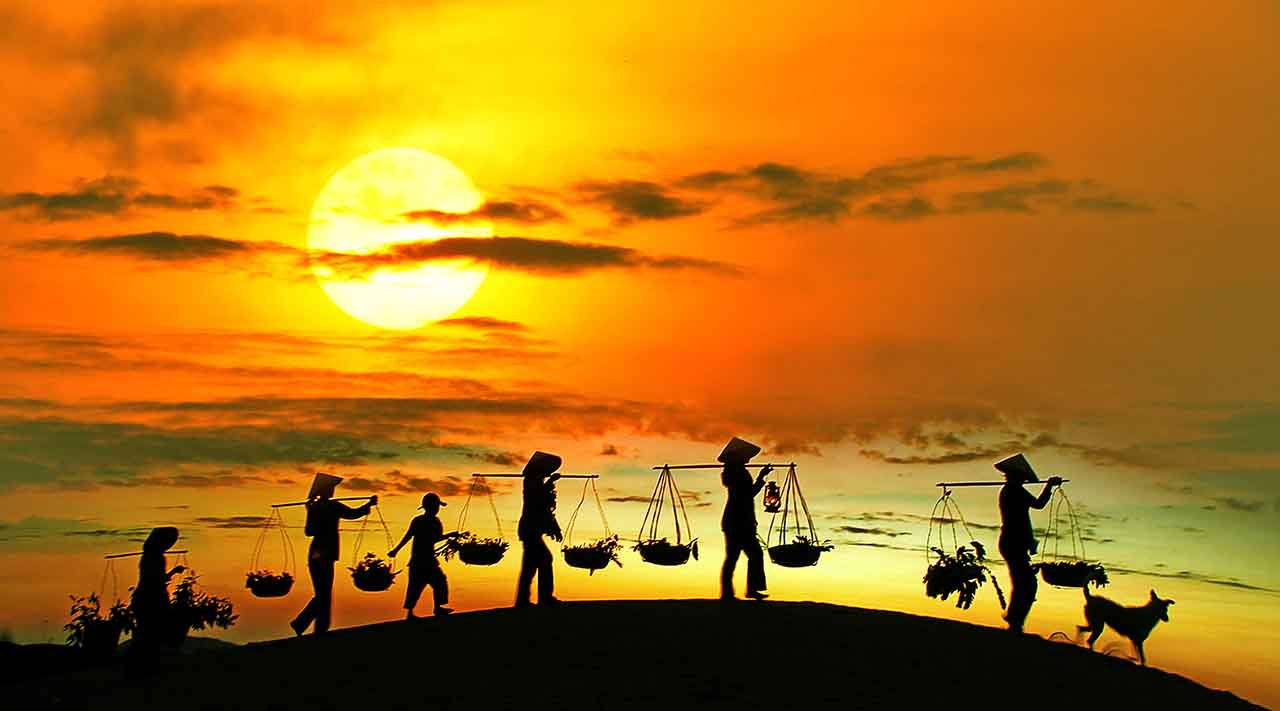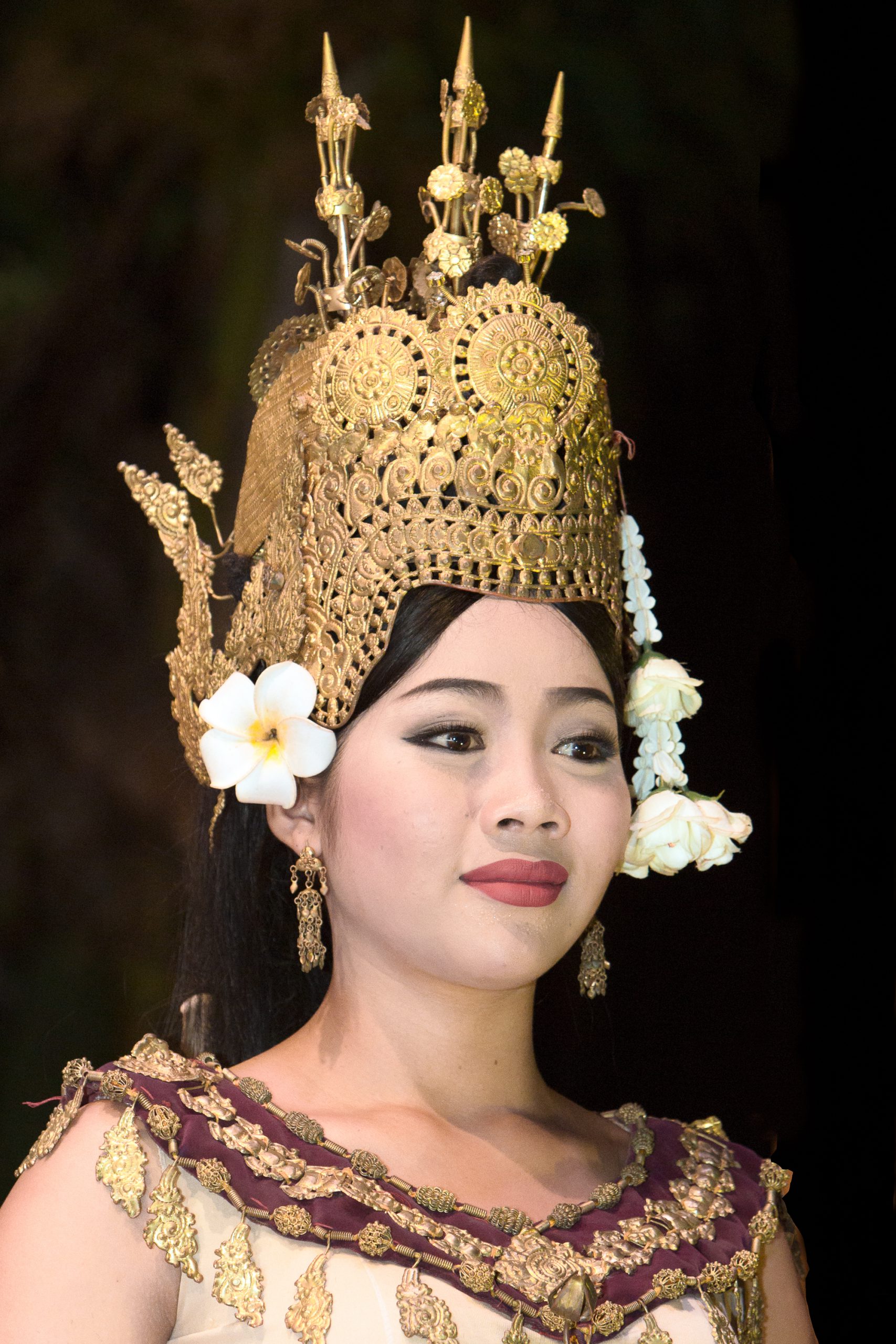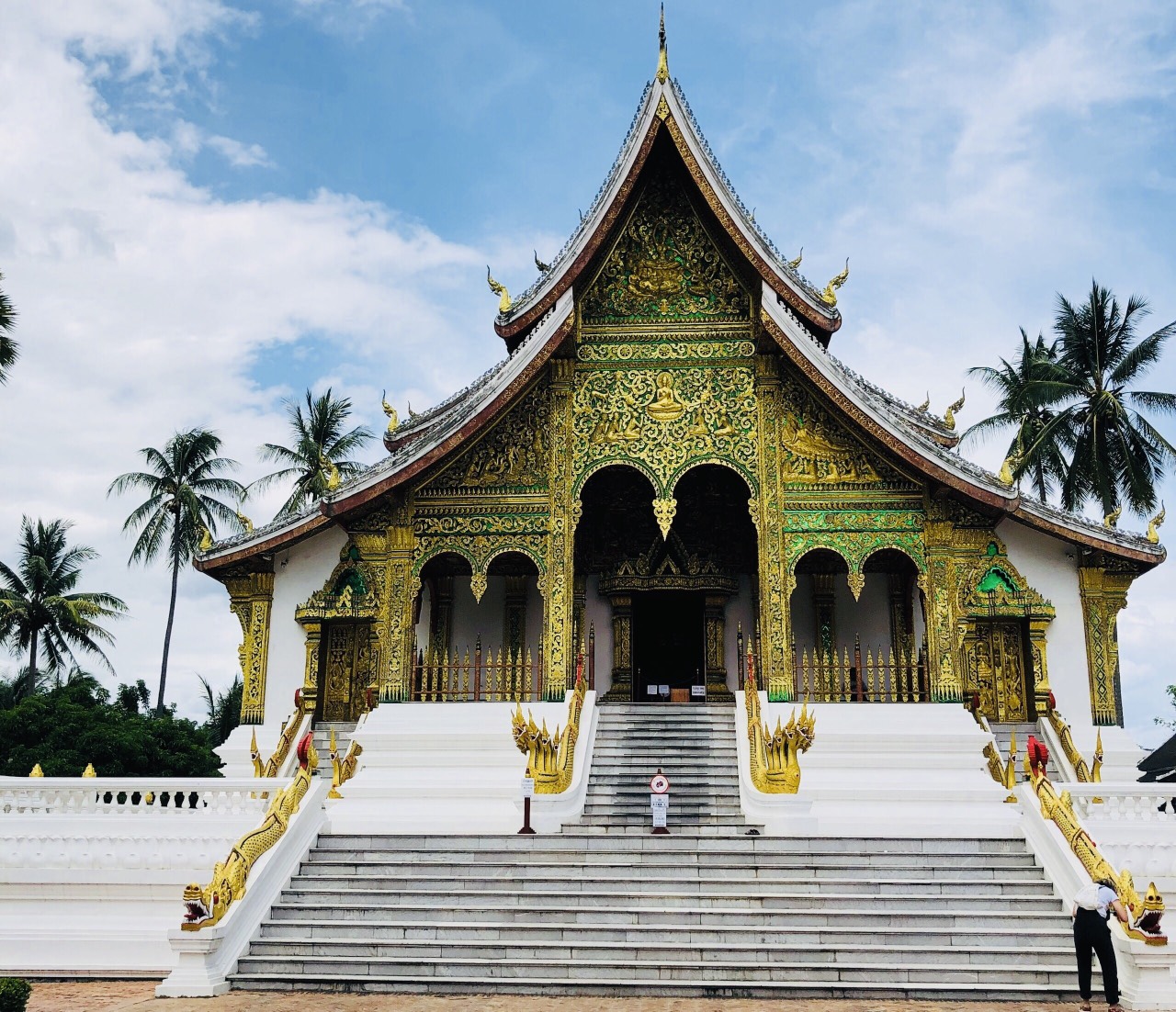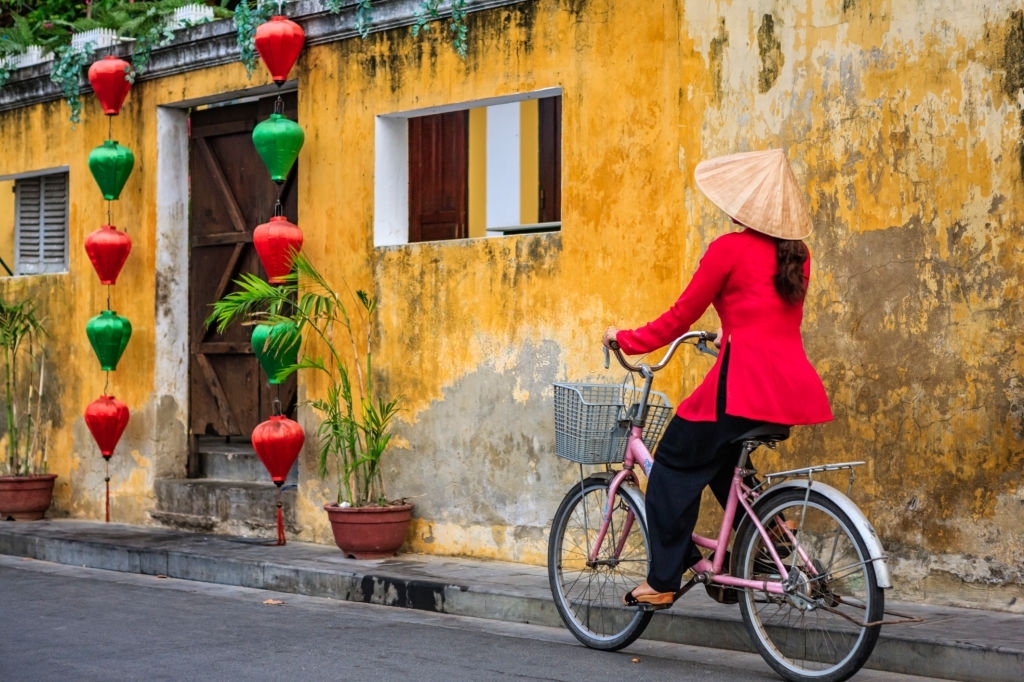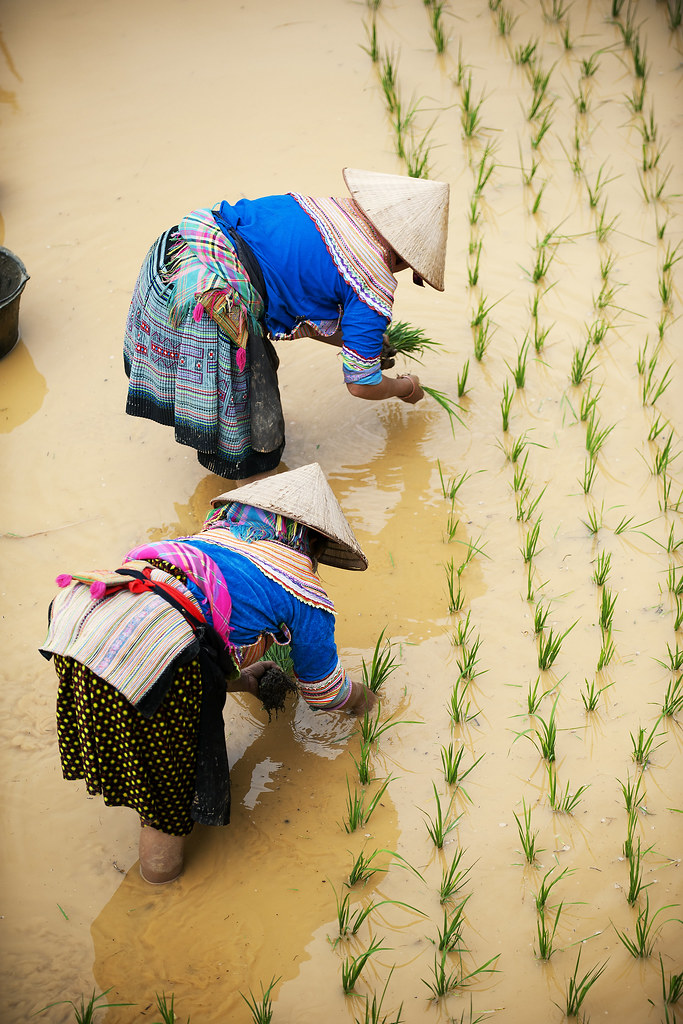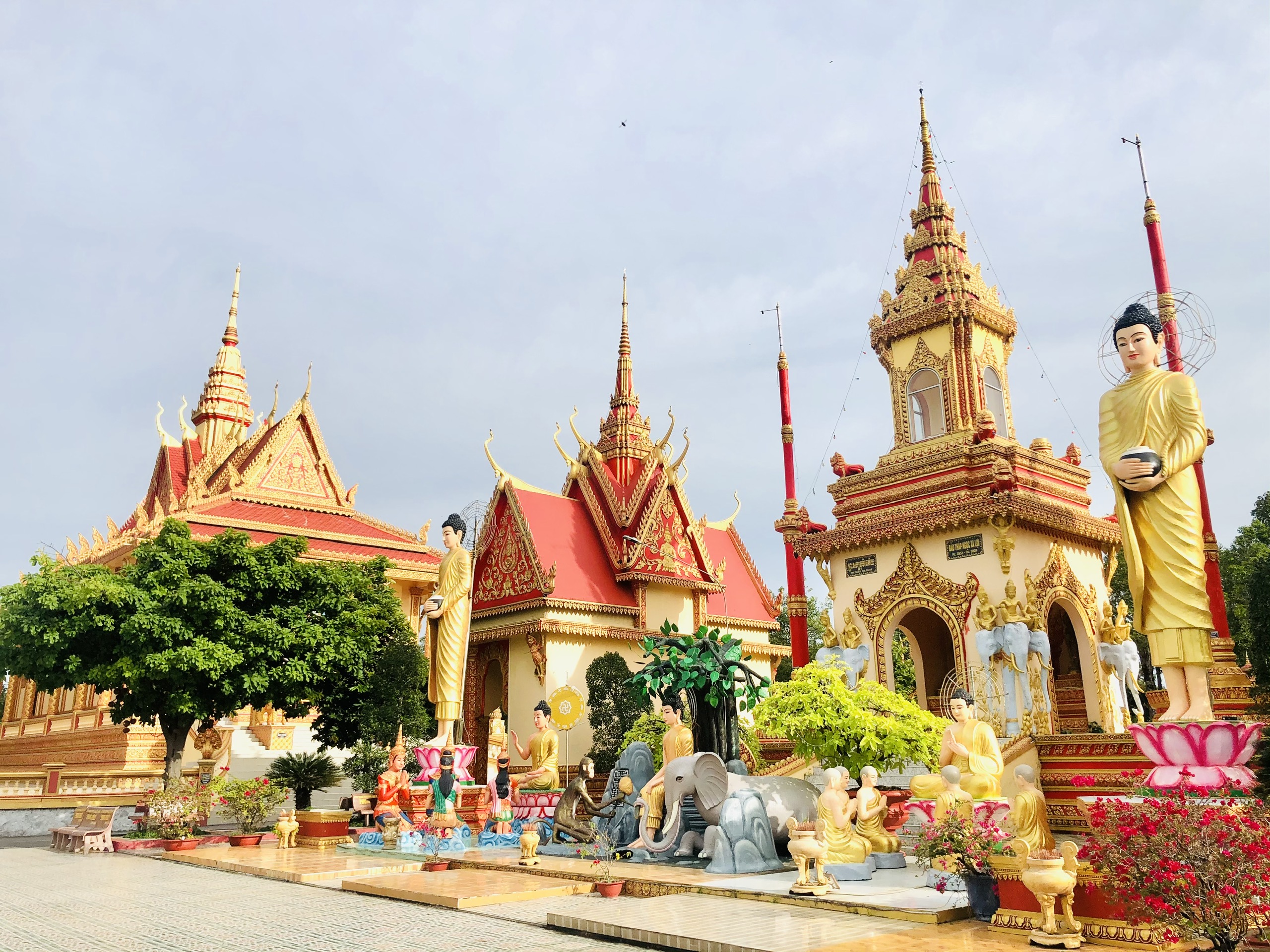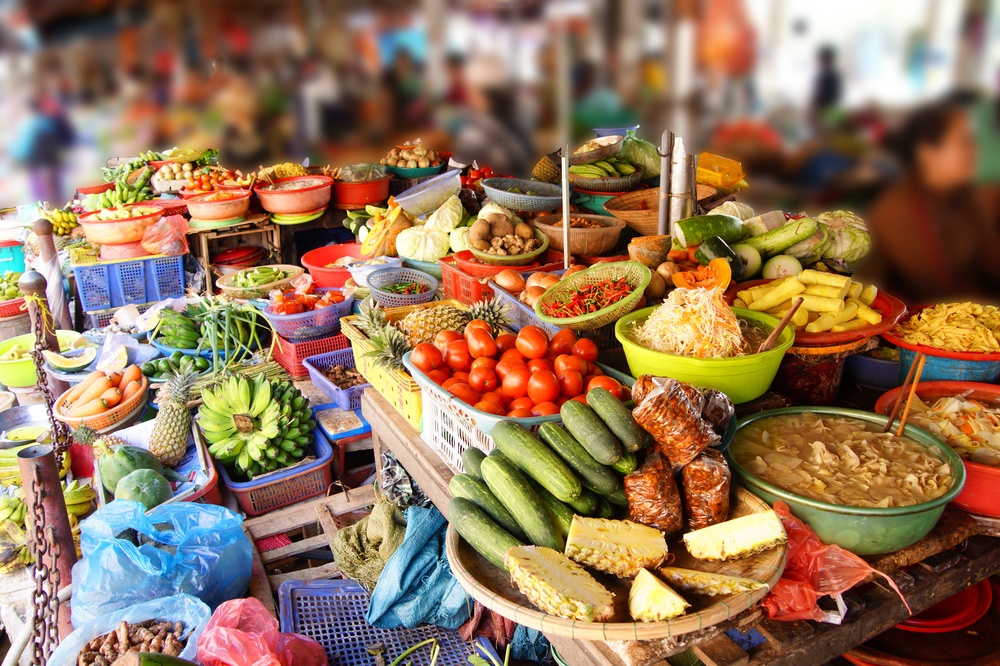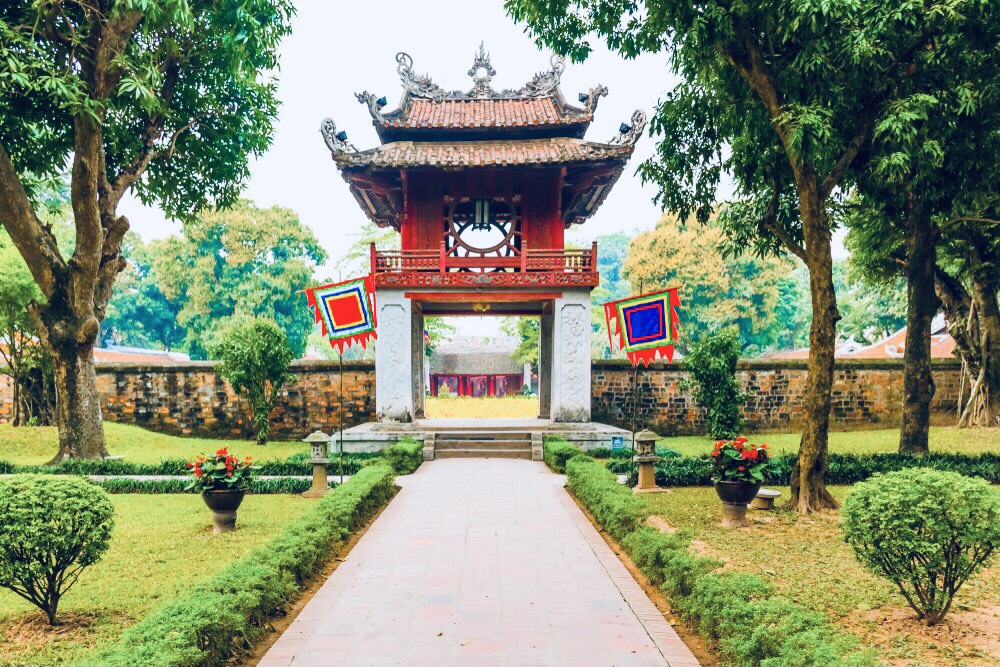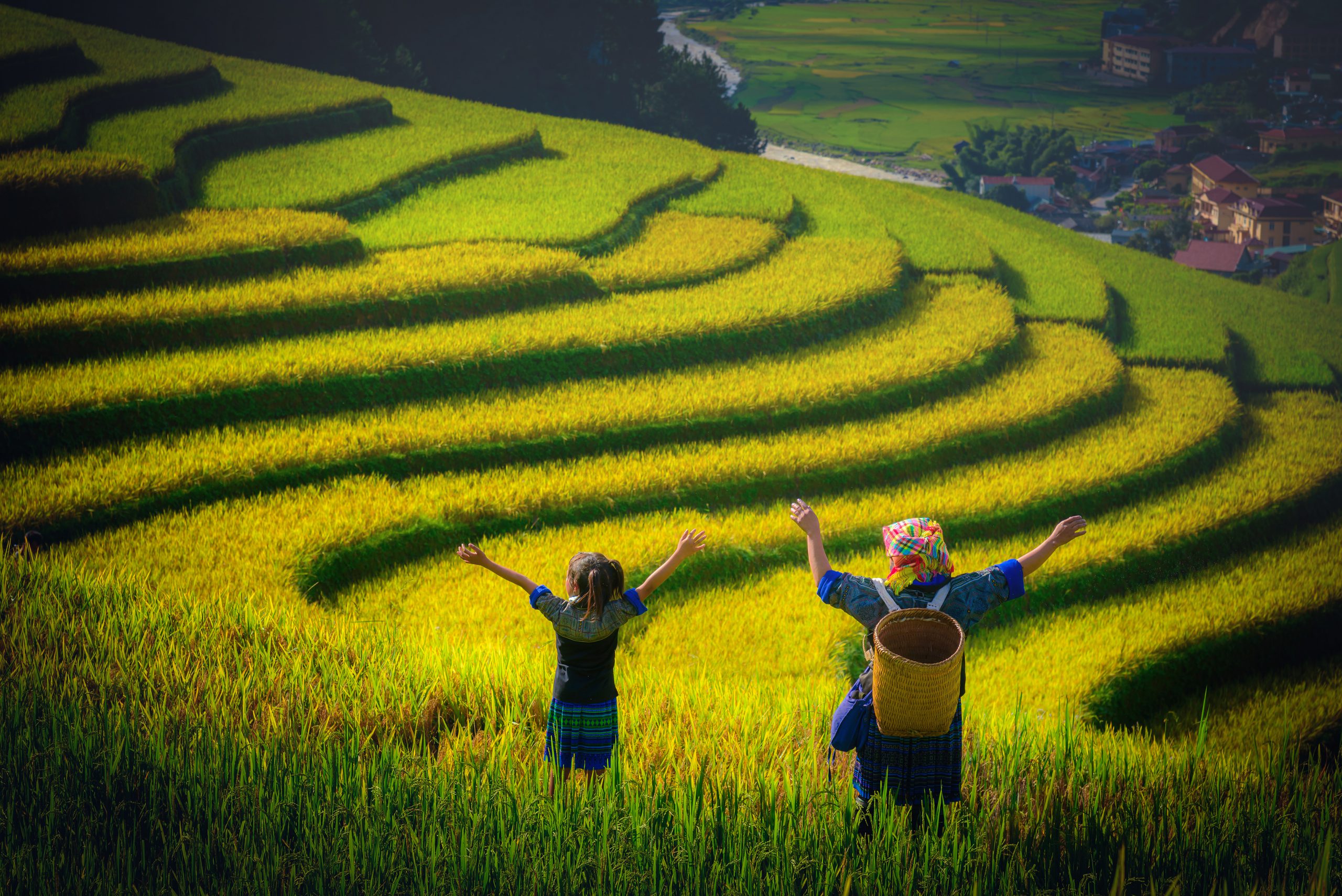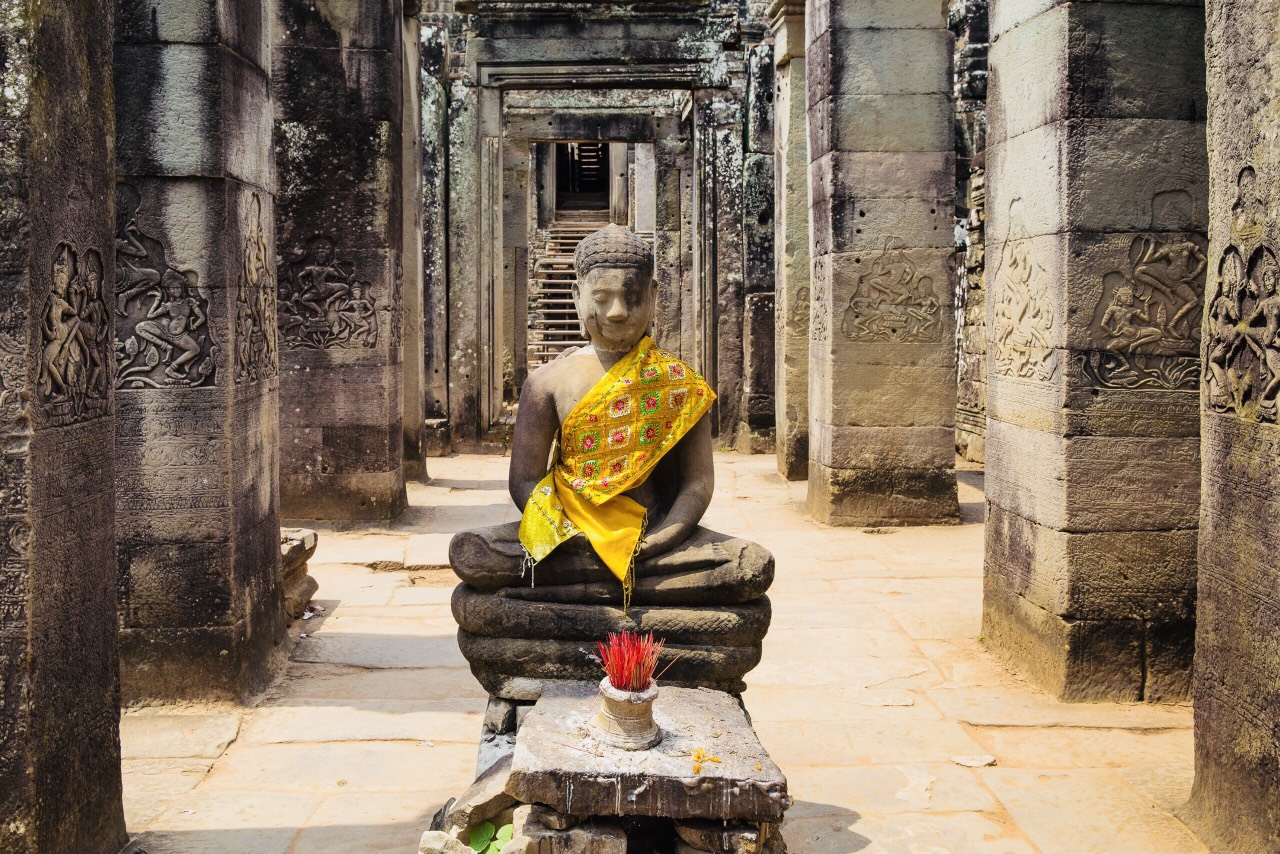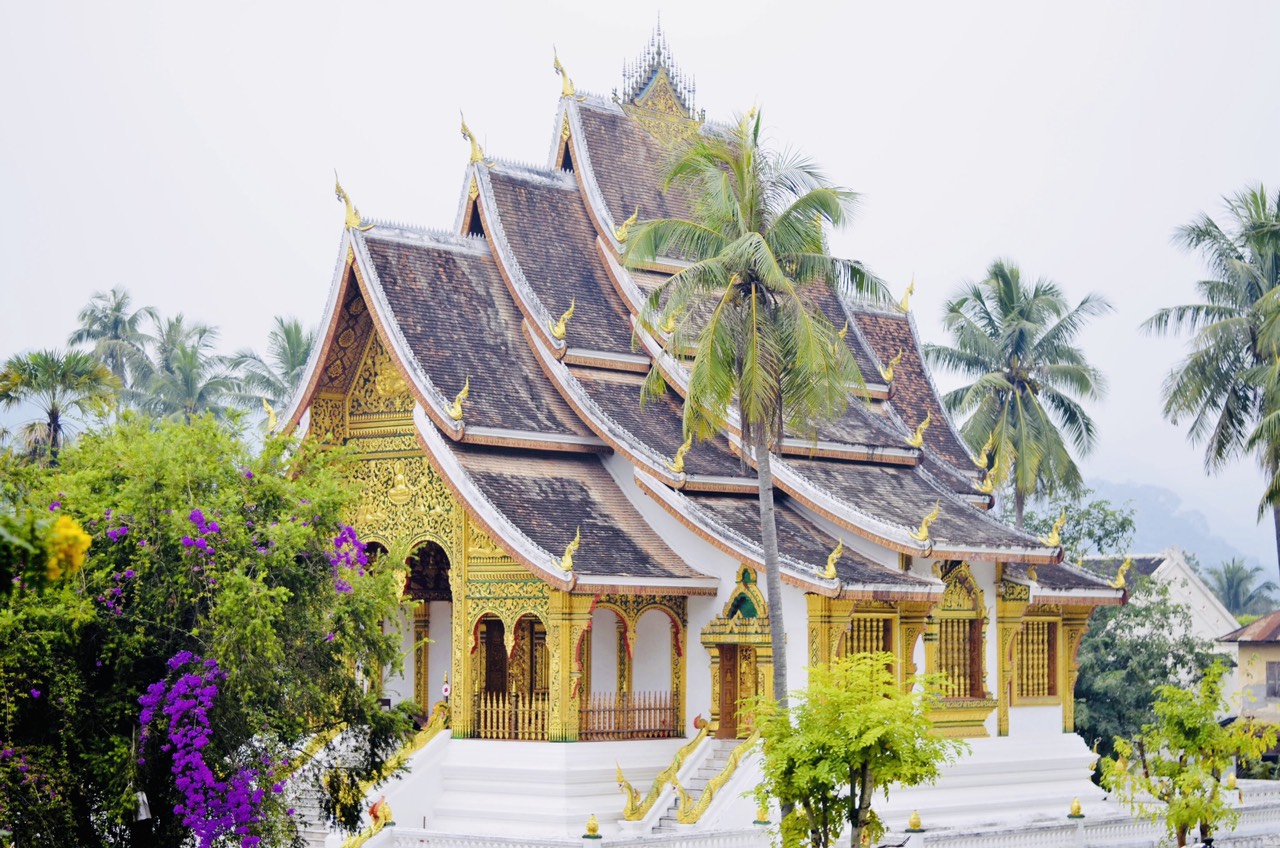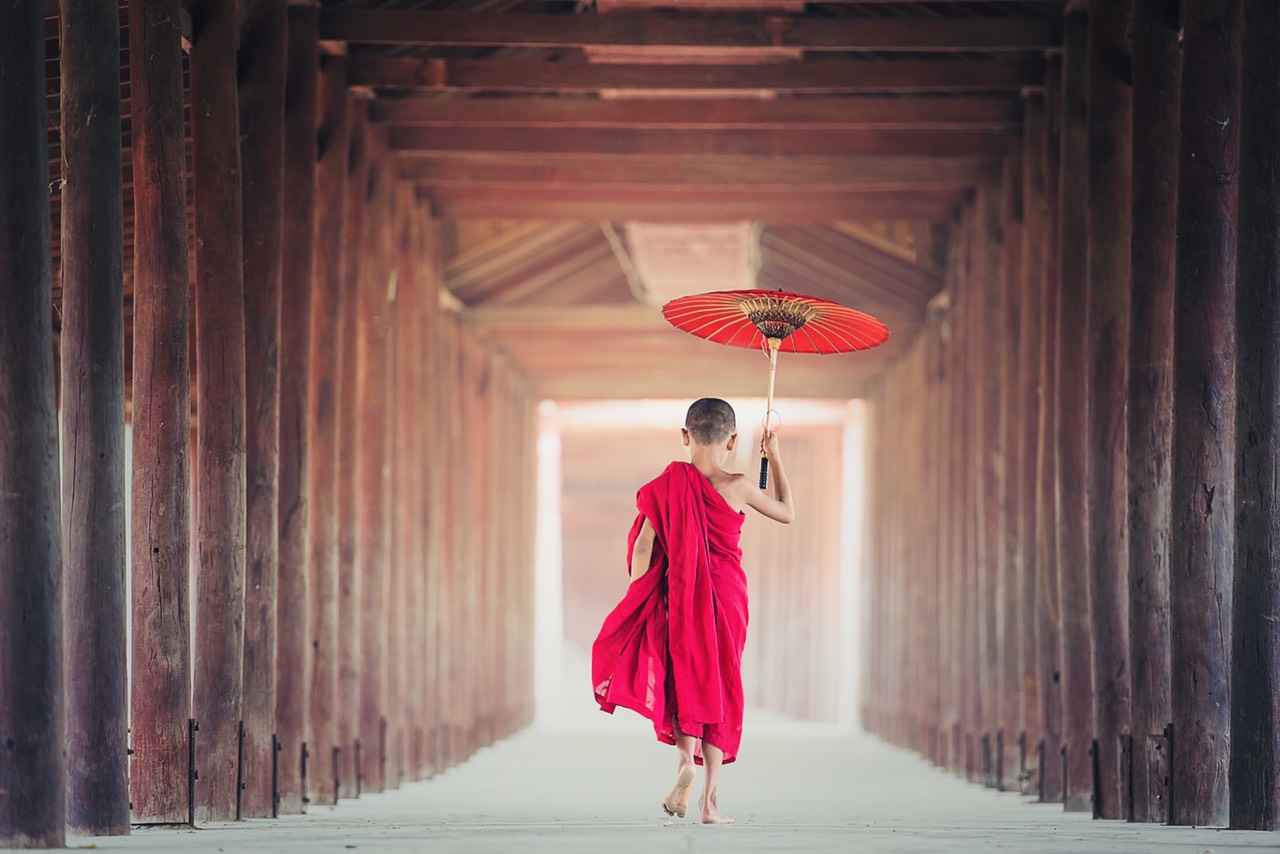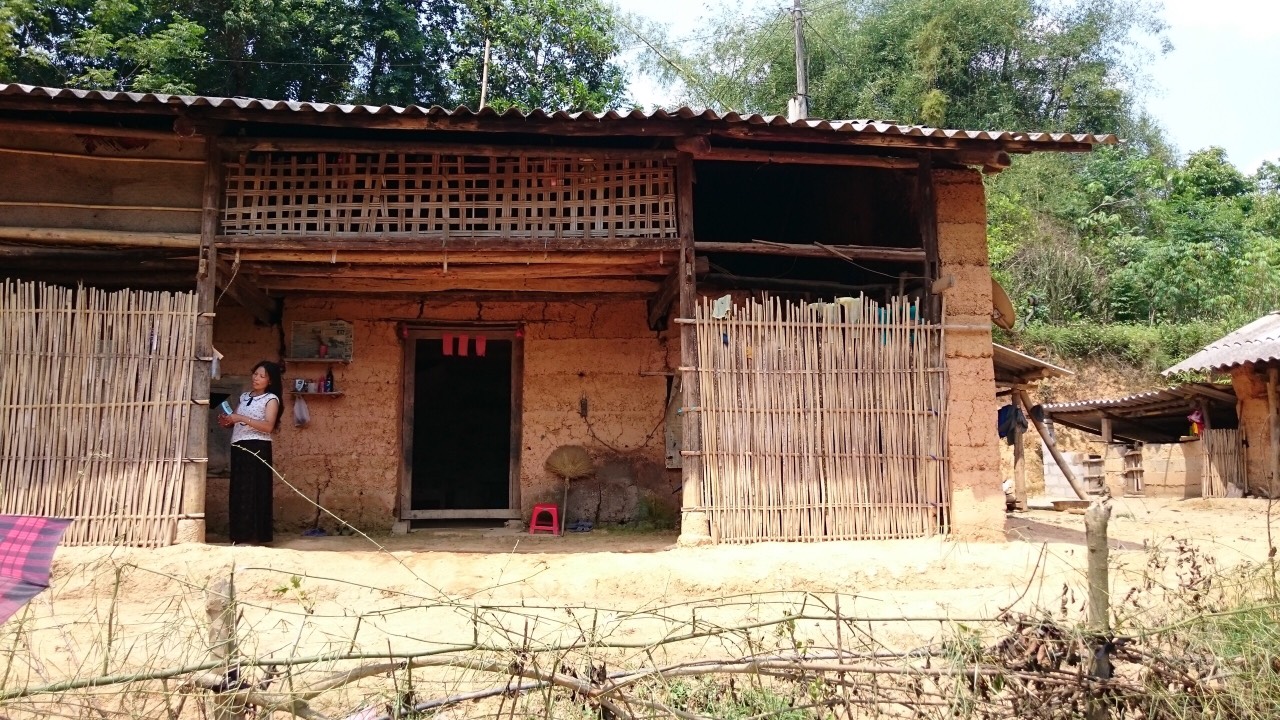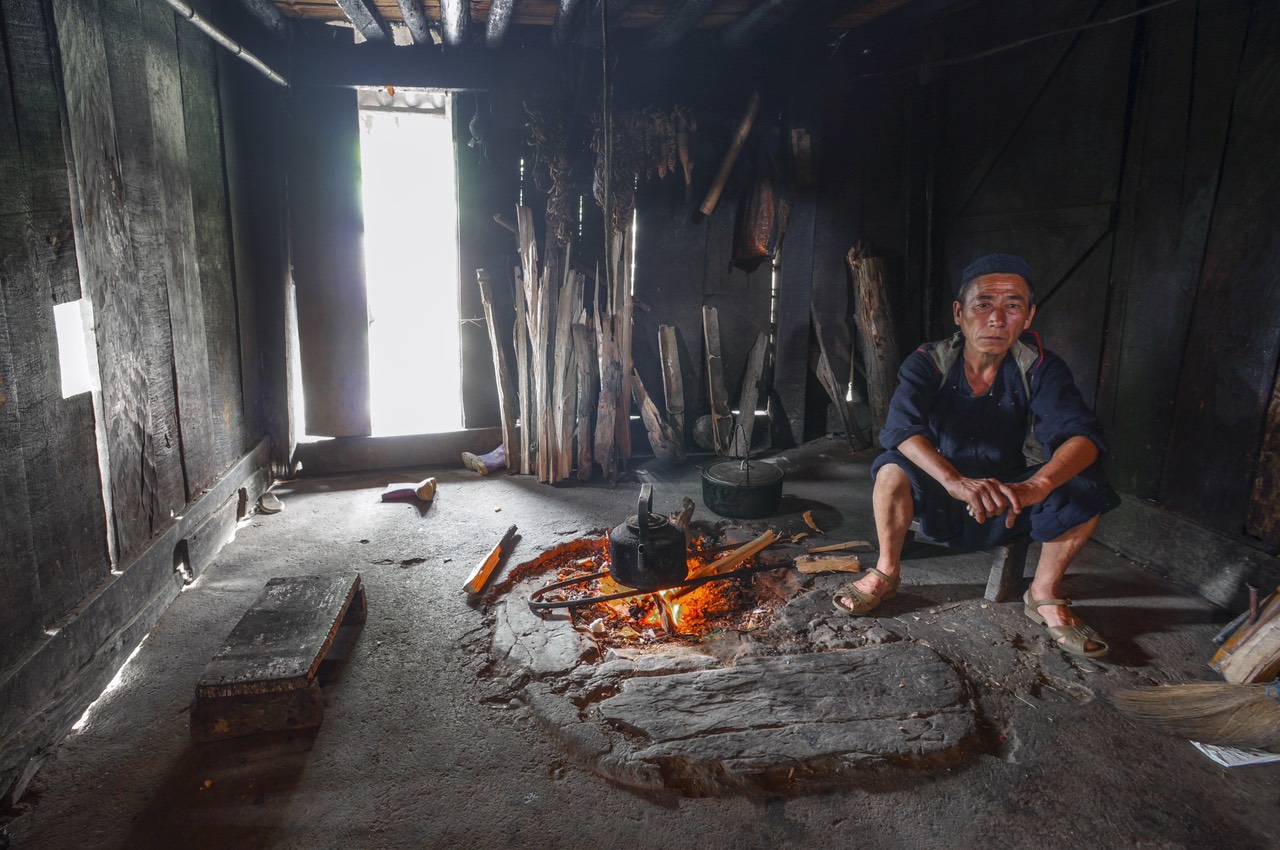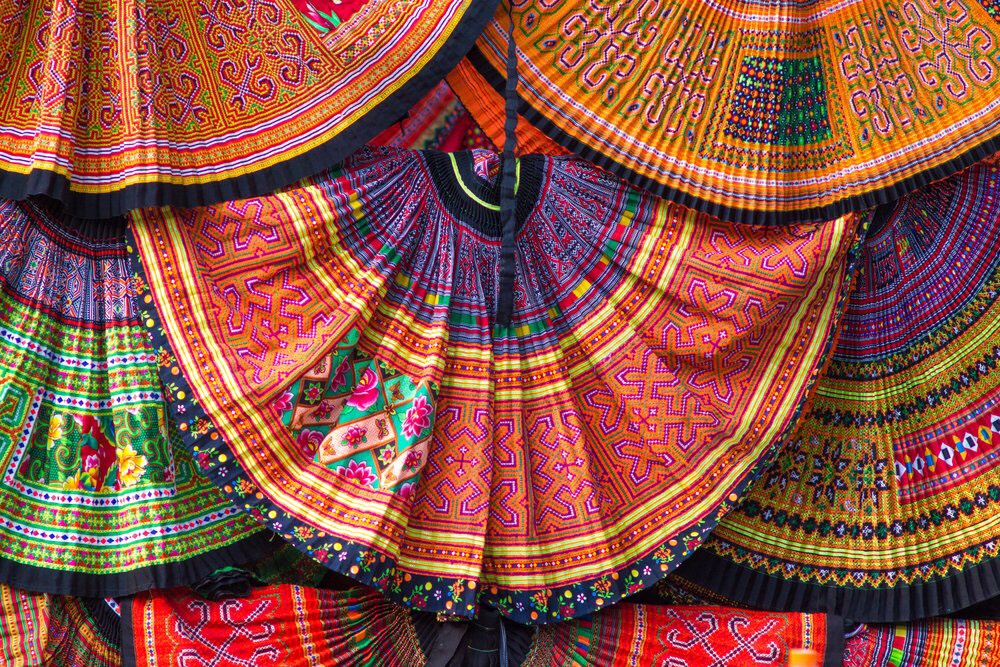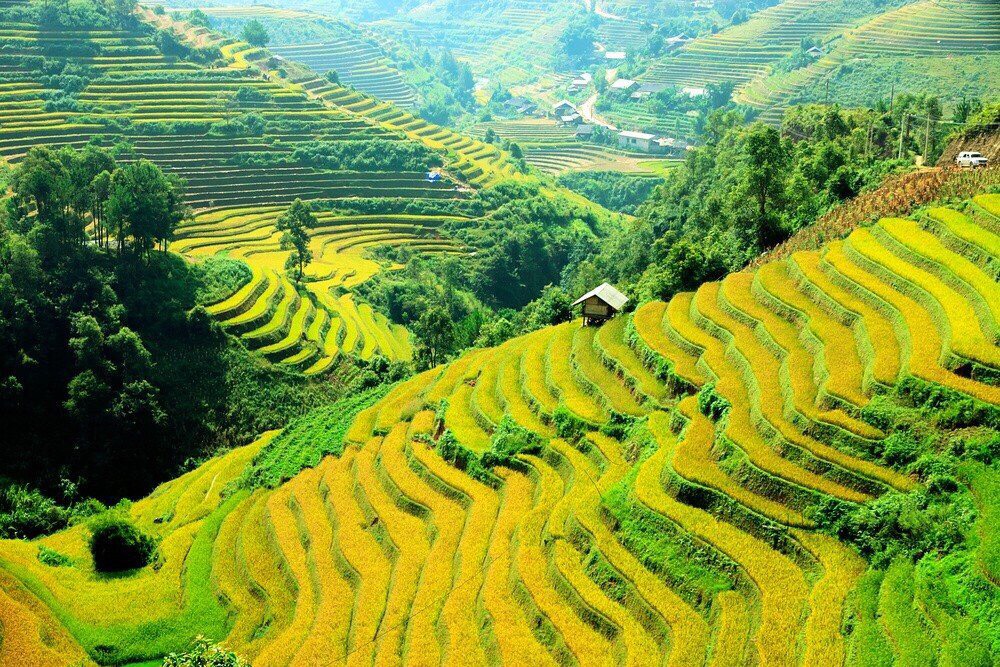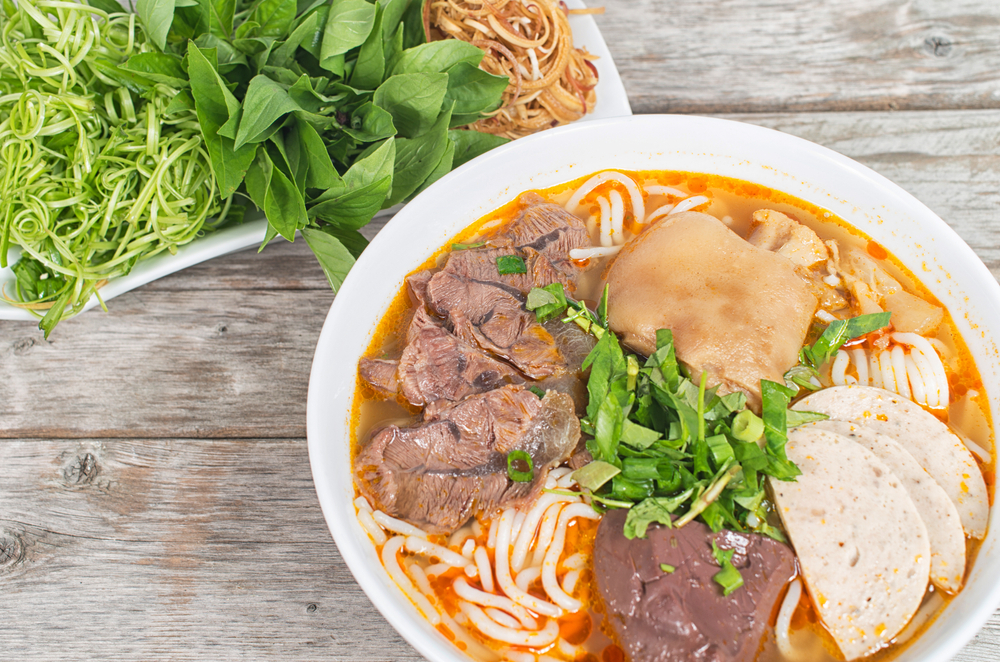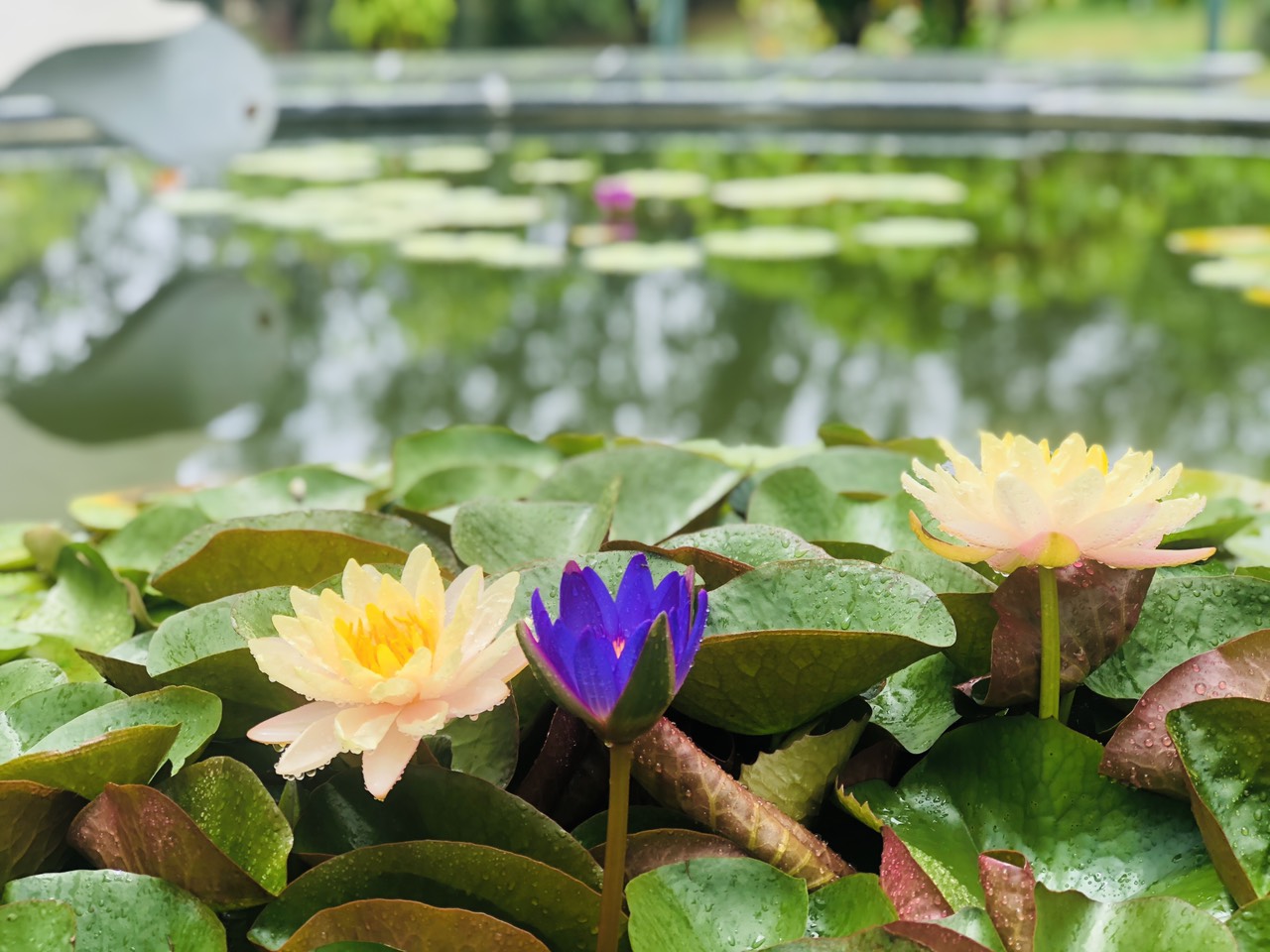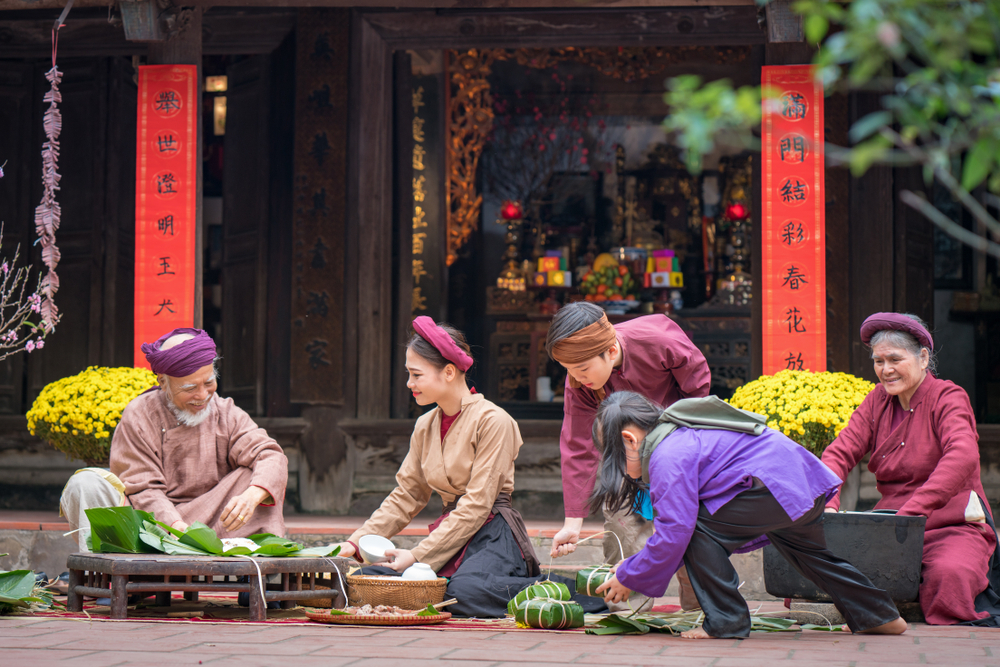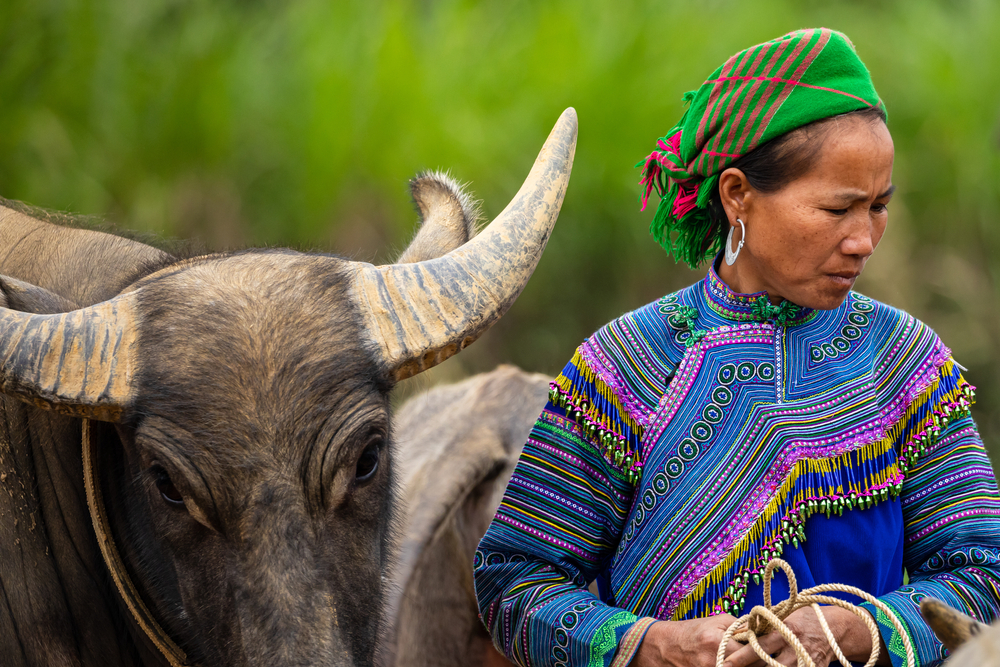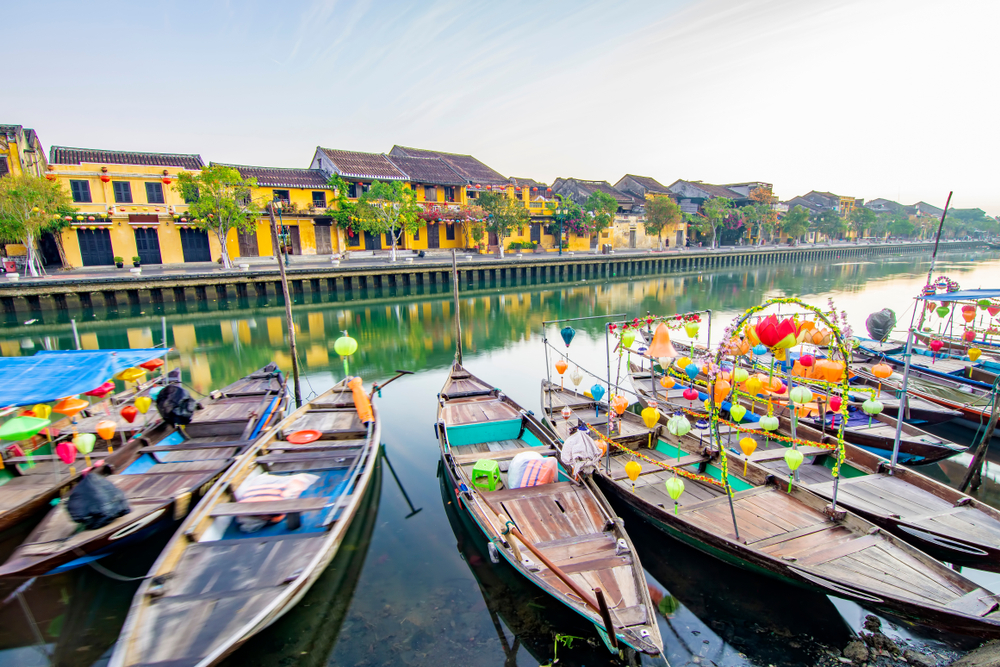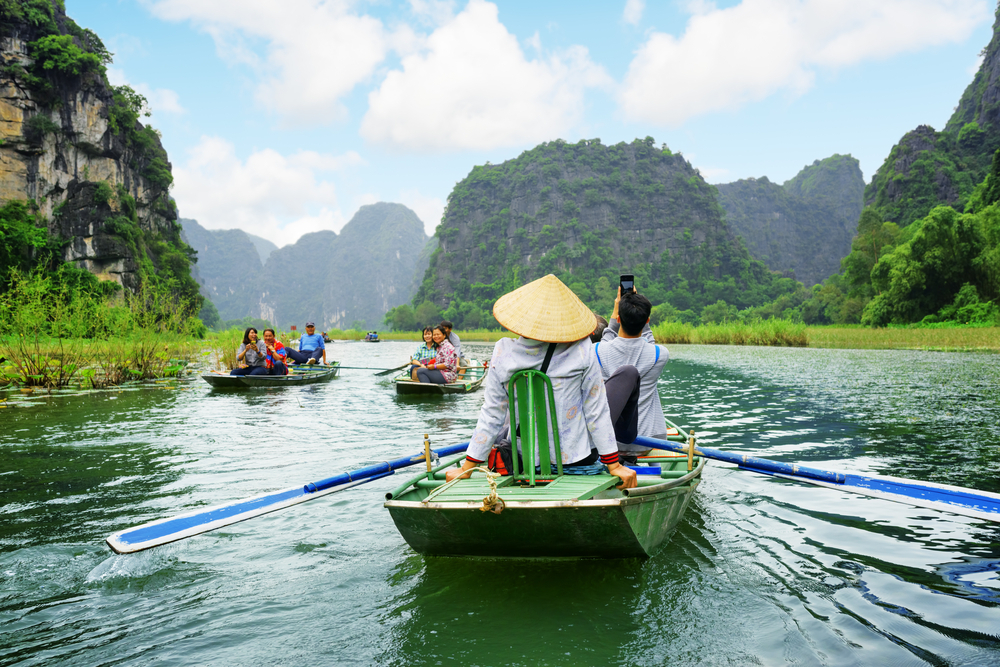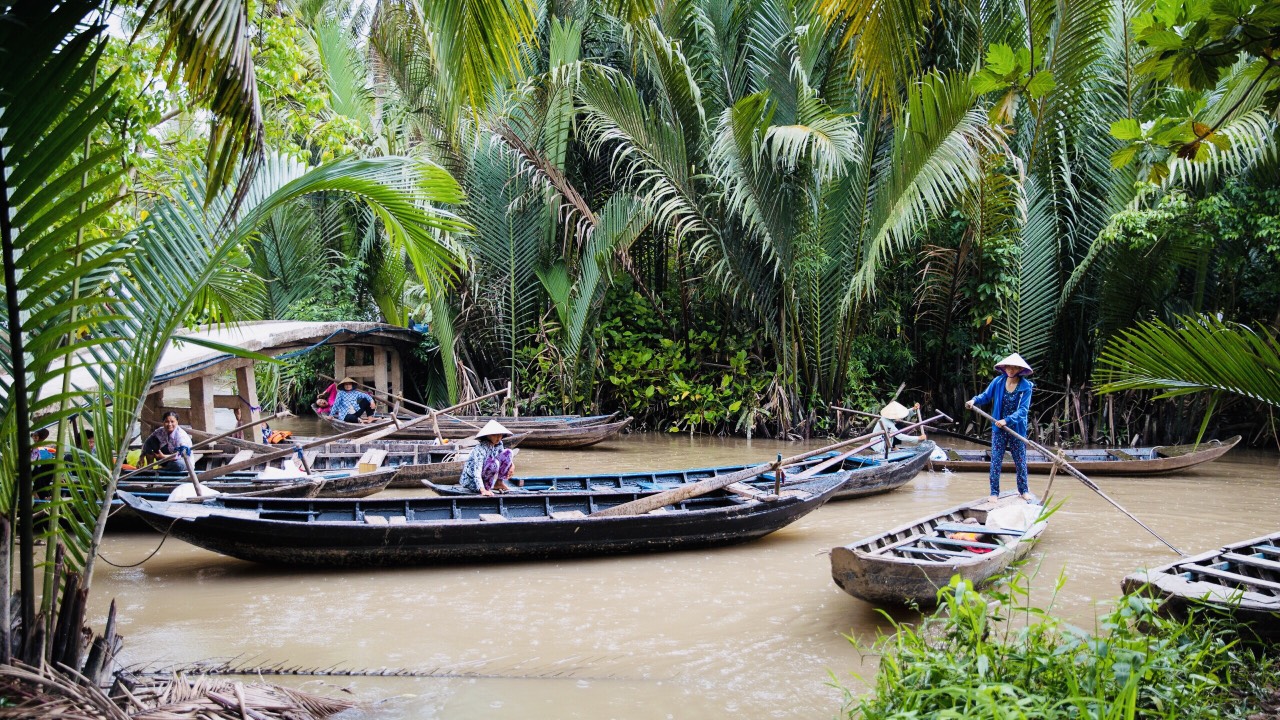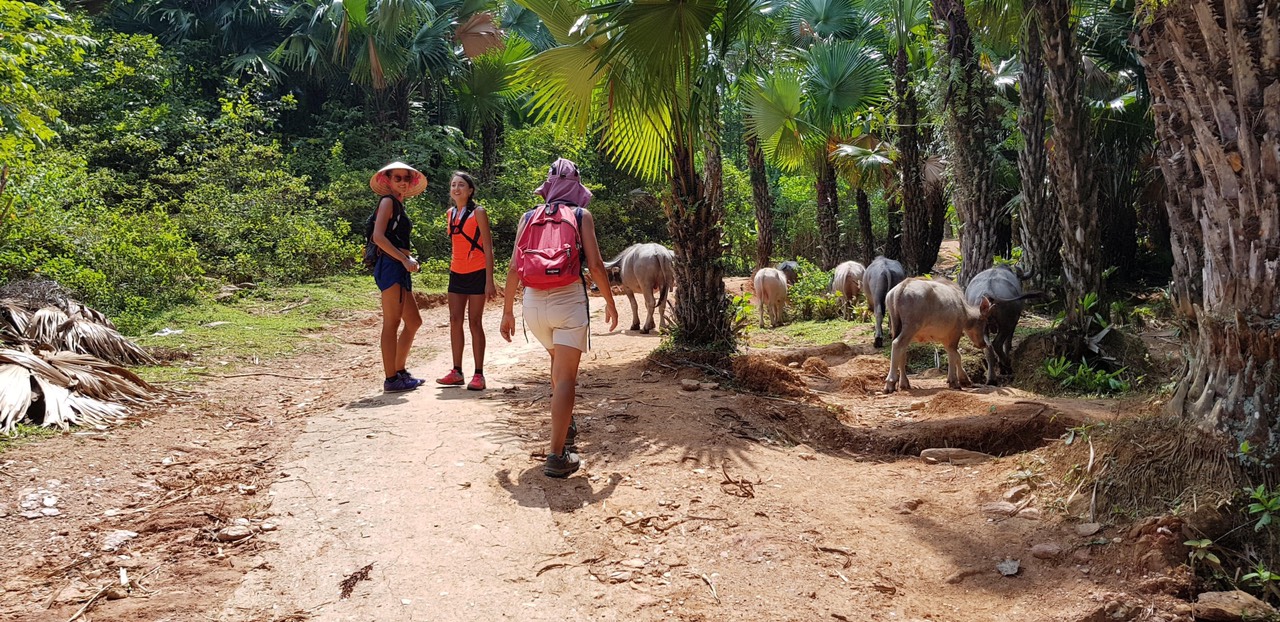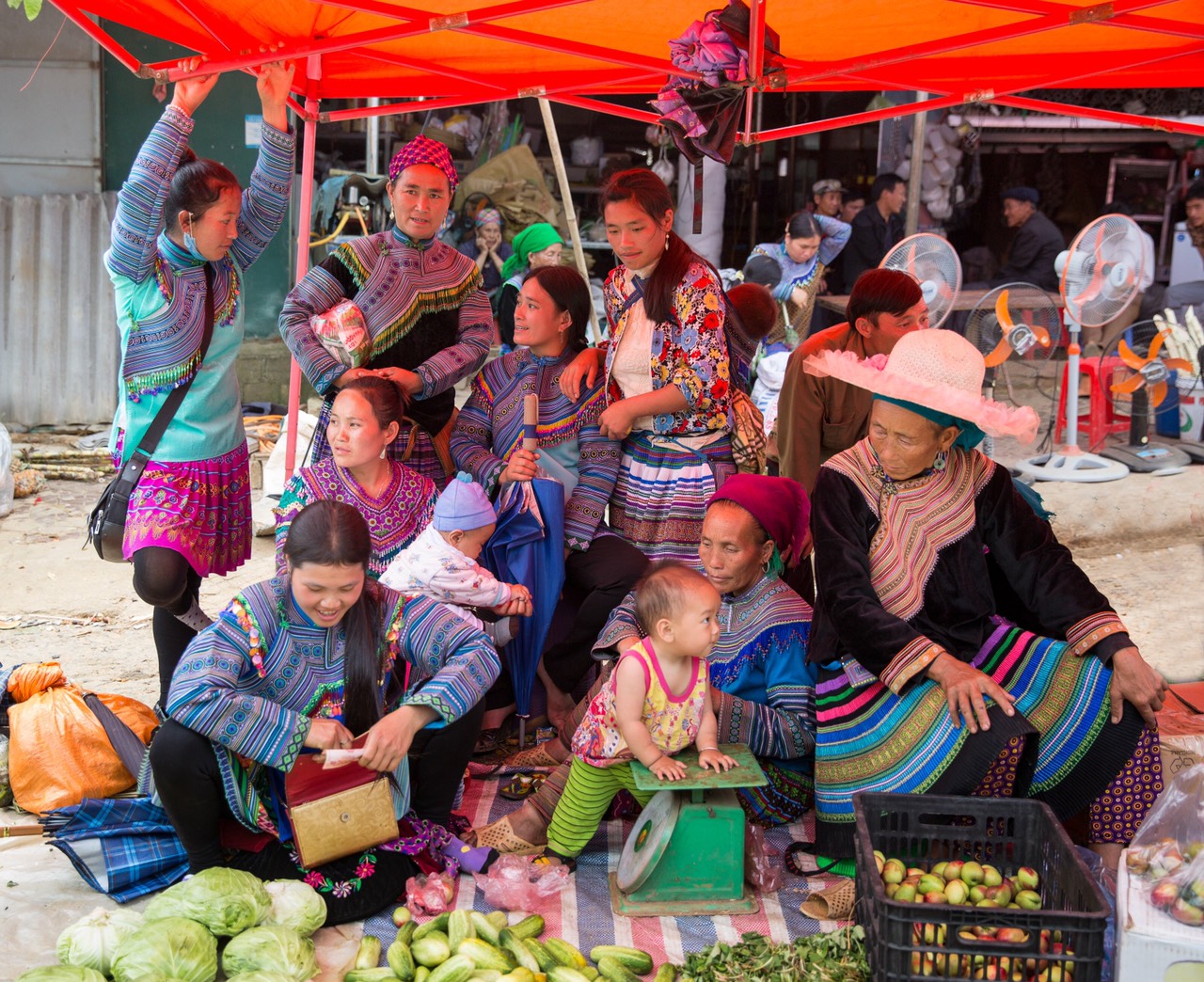
The Hmong are recent migrants, coming mainly in varying waves over the past two centuries.
The Hmong were part of the Miao (Mieu), a large ethnic group in southern China.
Towards the end of the 18th and the beginning of the 19th century, they emigrated to Vietnam, an emigration closely linked to the struggles against the Chinese feudal authorities.
They then founded hamlets in Vietnam in the mountainous regions of the north at high altitude, close to the Chinese border: Ha Giang, Lao Cai, Lai Chau…
– Hmong, Miao- Meo :

Les Hmong bariolé
A widespread legend wants that the name miao or mèo was given to the Hmong by the French because the Hmong climb like cats (mèo in Vietnamese). Nothing could be further from the truth!
The name miao is a deformation of the Chinese word mieo, a name that the Chinese gave not only to the Hmong, but to all their minorities, and which means “farmers”, but above all “savages, barbarians”. Needless to say, the Hmong hate being called Miao.
Their desire to maintain their independence has led them to engage in various conflicts. In particular, they joined the French during the Indochina war and then the Americans during the Vietnam war. A part of this ethnic group was victim of many persecutions because of these conflicts.
– La lignée :
In the Hmong culture, giving birth to a boy allows to preserve the lineage and thus to succeed in life. The lineage is precious, it is followed and respected throughout the centuries, the Hmong of the same lineage keep very strong relationships and solidarity.
The family system is patriarchal, with men having absolute superiority, and polygamy is not rare. Marriages between men and women of the same lineage are strictly forbidden.
– The village :

The mountainous North Vietnam is the common roof of many ethnic groups including Hmong
The Hmong villages, the Giao, are located in a hilly environment with groups of five to twenty households of the same lineage and sometimes a few hundred for some, the village is then called Giong.
Each village has its own territory, its own guardian genius, and conventions that are respected, and their violation is severely punished. These conventions are reviewed every year during the ceremony of the worship of the tutelary genius.
The administration of the village is the responsibility of a chief elected by the villagers. He may share his power in the case of very large villages and will then be appointed by the district or the region.
– Houses :
Their houses are built in wood and bamboo in a very rudimentary way directly on the dirt floor, sometimes slightly elevated, in the case of the Na Meo.
The doors and the central beam have protections against the spirits.
The roof is covered with shingles (today with metal sheets), which can be moved to let the light through and allow the women to weave inside, the houses have no windows, the only opening being the door.
The exterior and interior of a Hmong house
The houses have only one big room of three bays, in the central one there is an altar dedicated to the ancestors, on both sides, in the other bays, there will be the kitchen and the bedroom. Lean-tos or spaces under the house when there are small piles (only in the Na Meo group) are used for small domestic animals (chickens, pigs, dogs) or for the storage of materials such as wood, hoe. The buffalo or the small Hmong horse will have their own rudimentary shelter made of planks.
– Beliefs, holidays :
The Hmong are animists: “Animism is the belief in a spirit, a vital force, which animates the living beings, the objects but also the natural elements, like the stones or the wind, as well as in protective genies”.
The Hmong practice shamanism, an old religious tradition. For the shamanists, the soul – or souls, because a man can have several – are always ready to leave the body to wander, even if it means being devoured by evil genies, the dab. To make it come back, a shaman is called in, who, once in trance, enters into communication with this wandering soul and tries to persuade it to come back, if it has already been captured by the dab, he tries to wrest it from them.
According to local beliefs, the Hmong receive 12 souls at birth and the three most important souls occur after death: the first gives life to the individual and remains among the living after death; the second leaves permanently to stay in the land of the ancestors, and the third is reincarnated in a human being or an animal.
These beliefs are the occasion of many festivals and celebrations, some more important than others :
- The Tet Hmong is the biggest festival it celebrates during the 12th lunar month the end of the work, that is to say, a deserved rest of the peasants, but also of the animals and the tools of work.
- During the Hmong funeral ceremony, detailed instructions for the journey to the world of the ancestors are sung and played to the soul of the deceased. The reed organ, the Khen, sings long poems in its seven notes of music, creating a disguised language that can only be understood by the dead.
– Family, marriage :
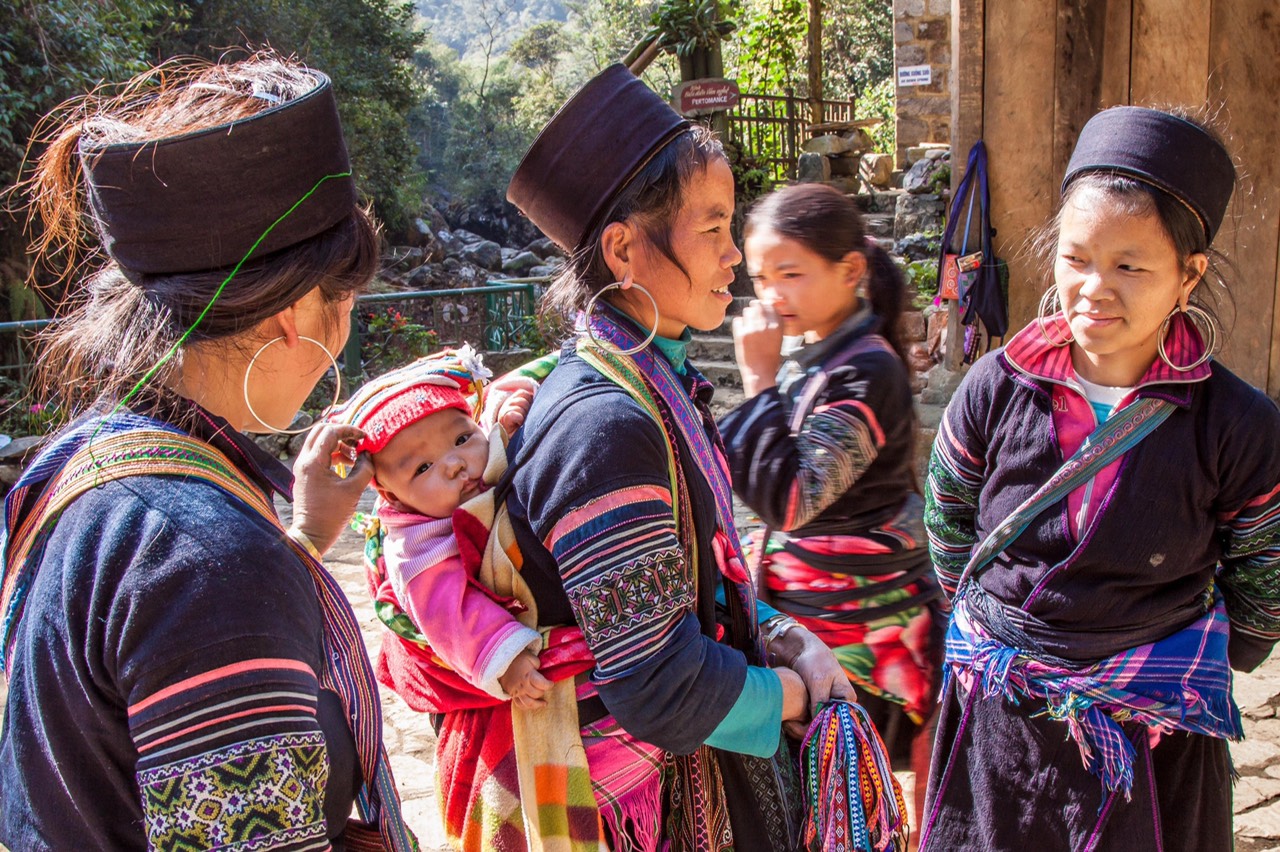
A Hmong baby on his mother’s back
The Hmong women give birth squatting, the patients do not shout in order not to attract the bad spirit and not to frighten their child. The placenta, for a boy, will be given to the family, it will be buried at the foot of the bedpost of the mother-in-law so that the soul is reborn, for a girl it will be buried under the marital bed. The soul is threatened, the family must serve broth and eggs to the young mother in order to give her strength. The new mother will not leave the house for four weeks in order to prevent an evil spirit from eating her… !
The mortality rate of ethnic children is 10 times higher than in the rest of the country. The Vietnamese ethnic integration program, with the support of the UN, has initially trained 50 itinerant midwives. They follow pregnancies in remote villages and assist in childbirth.
Among the Hmong, marriage is too often practiced from 13-14 years old. The age difference is not a problem and a 30 year old man can marry a 13 year old girl. Nowadays, early marriage is forbidden by law, but unfortunately it is not always enforced. Although illegal, bride kidnapping is regularly practiced by the Hmong: a boy kidnaps a girl without her family’s consent. Once the girl is with her husband, her parents are required to contact the kidnapper’s family, and they may request her release or agree to the marriage. If the marriage is agreed to, a bride price is payable by the boy’s family. When there is no kidnapping, the marriage is subject to negotiation in order to evaluate the value of the future wife…
Marriage rules: Marriage between people of the same lineage is prohibited. If the husband dies, his widow marries the younger brother of the deceased, even if he is already married. If the latter has no brother, she marries one of his cousins. In the event of divorce, the wife stays in the house of a village official who protects her until she remarries. If she wishes to regain her freedom, she must pay her family-in-law a certain amount of money as compensation.
The “love markets” of the “beautiful month of May” (in the region of Dong Van – Ha Giang province), it is here that single men and women gather to choose the partner of one day.
60% of Hmong families live under the poverty line, every arm is useful for survival. In theory, the children go to school, but few attend regularly, having to help with the heavy workload.
– Handicraft :
Design on the traditional dress of the Hmong in Bac Ha
It is quite developed and diversified. The Hmong work with iron – agricultural tools, silver – jewelry, skins – tanning of horse hides, they make fiber paper, do basketry, carve wood, but they practice these trades only in the off-season, outside of plowing, sowing and harvesting.
– Agriculture, breeding :
They burn the land to grow rice, which is the basis of their agriculture, but also corn, in the karst plateau regions (Dong Van – Meo Vac), rye, hemp and flax for weaving, some buckwheat, various legumes, valuable medicinal plants and formerly opium. They were encouraged by the French to produce opium for export to China, its production is now forbidden.
Rice terraces in North Vietnam
- Hmong agriculture is based on the regeneration of land, which once cultivated for several years, can become forest again, which made them a nomadic people for a time, today they are more sedentary. They are also the builders of the rice terraces that can be seen in Sa Pa, Mu Cang Chai for example. Slash and burn agriculture is the norm, which has earned them the title of “forest eater”. They also cultivate fruit trees, apple trees, peach trees, and the Hmong plum which is well known and appreciated by all. Buckwheat is also part of their culture and every year the beautiful blooming of buckwheat brings many tourists to admire the beautiful show (October) (buckwheat is sown in the rice fields once the rice harvest is done).
- Livestock, domestic animals: The Hmong, like all ethnic peoples of Vietnam, are surrounded by animals. They raise buffalos for the work of ploughing the rice fields – horses, Ngua Noi, pure Vietnamese pony, for the bat, the riding, the race (in Bac Ha) and also the pharmacy – goats and pigs for food, poultries, dogs, Lai or Dingo of Indochina: a very popular species in the mountainous regions.
This dog is reputed to be disciplined, faithful and a good guardian (so beware of dogs running loose in the villages). Its wild nature leads it to hunt small animals such as mustelids, rats or snakes. It is of medium size, its coat is pinkish beige, black, gray or spotted. The Hmong never eat dogs but sacrifice them to the genies in very special circumstances.
– Ethnic markets :
Markets of the multicolored Hmong in Bac Ha and the white Hmong in Dồng Van
They are the privileged places to sell, buy, exchange and especially to meet. They are at fixed dates, once a week or said to be at reculés, a day defined on the lunar calendar is for example the day of the pig or that of the goat, etc. They can also take place every 5 or 6 days. Some families take more than 2 hours to get there with their goods and as much to return to their villages perched on the mountainside. Several different ethnic groups go to these markets, the exchanges are done here!
You can find everything on the markets, handicrafts, traditional medicine, jewelry, ethnic clothing, seeds, pigs, dogs, chickens, buffaloes, horses, birds, agricultural instruments, soup stalls, food, Chinese goods (the border is never far), musical instruments… a husband or a wife… It’s endless !
– The musical instruments :
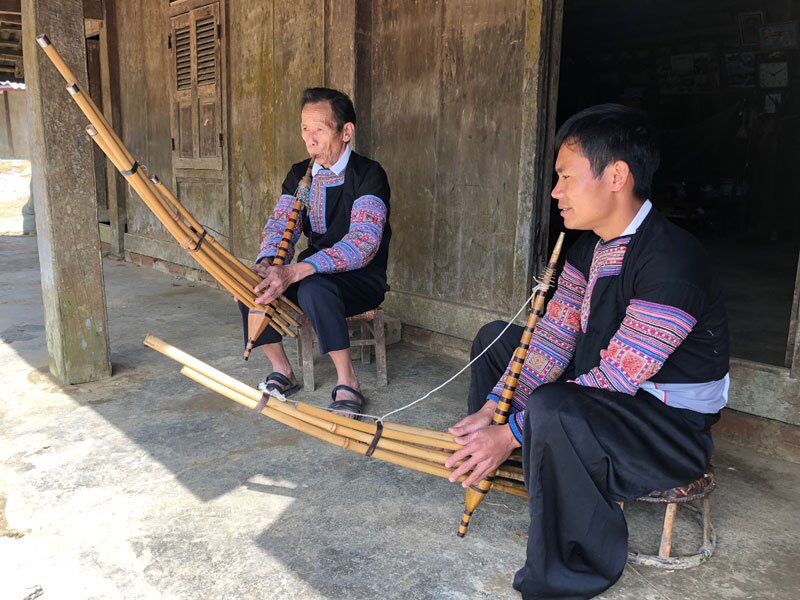
The Khen
In addition to singing, the Hmong also play many musical instruments. Each melody can be translated into phrases, into words. The Hmong language is tonal, that is to say that it is based on tones and intonations.
- The mouth organ, the Khèn : It is an aerophone with a wind chamber (made of gourd or hard wood) composed of bamboo pipes equipped with free reeds.
- The Hmong Jew’s harp made in North Vietnam is an instrument used for many years. Conceived in a sheet of brass with a very great precision in the notch of the lamella in order to give a vibration and an optimal resonance.
– Costumes :
The traditional dress of the black Hmong in Sa Pa and the flowery Hmong in Bac Ha
Hmong women weave hemp that they dye with indigo for their costumes. Planting, weaving linen, making clothes, embroidery or wax dyeing (batik) are also part of their talents.
Embroidery is done on appliqué pieces, rarely directly on the garment. These pieces also serve as reinforcement against wear and tear and are sewn onto sleeves, shoulders and edges of jackets, skirts and pants.
From childhood, girls learn embroidery and make their own clothes, up to the most advanced garment, the wedding dress.
The latter consists of a full skirt with pleats or pants, an open bodice on the front and a breast cover. It varies according to the group in its shape and colors. The Hmong woman wears a bib on the back, an apron on the front, she walks barefoot or in sandals and wears leggings as protection.
The men wear wide pants that they tie at the belt, a short jacket, the sleeves are wide, the whole is made of hemp dyed with indigo. They have simple sandals on their feet.
– Hmong groups :
In Vietnam there are 7 Hmong groups which are divided into several sub-groups.
- Green Hmong – Hmong Xanh – They live more in the northwest (in the provinces of Son La, Dien Bien, Yen Bai) as their name indicates their costume will be predominantly green, they wear a lot of silver jewelry: necklaces, bracelets and silver ornaments sewn on their costumes. Their hair, long, is left on the shoulders before the marriage, they are put in bun after this one.
- Red Hmong – Hmong Do – around Bac Ha, Si Ma Cai, Muong Khuong, Hoang Su Phi and Xin Man. Their skirts are very wide “au cent plis”, embroidered with red their hair is left long with tassels of red thread intertwined with the hair.
- Black Hmong – Hmong Den – They are the ones from Sa Pa, Lao Cai province (Sa Pa region), Yen Bai, Cao Bang, Lang Son and Dinh Hoa. In the past, the women wore skirts, but since they live in the mountains, they now prefer long johns. They wear a small calo on the head sometimes decorated with embroidered applications or a scarf of colors.
- Hmong bariolé, Hmong fleur – Hmong Hoa – You will see them mainly in the markets of Bac Ha, Can Cau and Sín Chéng in Bac Ha and around the district of Tua Chua, Lai Chau province, Lung Phinh, and Lao Cai. The embroidery work in application of the hundred pleat skirts and jackets is remarkable, the hair is long with hairpieces under red or green scarves
- White Hmong – Hmong Trang – The Trang woman is shaved on the sides with a tuft of hair at the top and a turban, her skirt will be made of natural color linen. They live mainly in the north of Ha Giang (Quang Ba, Dong Van, Meo Vac, around Bao Lac, Mu Cang Chai and in Tram Tau district (Yen Bai province).
- The Na Mieo (Water Hmong, Hmong Shua and Han Miao) – They consider themselves a unique people. At one time they had their own kingdom called Liuzhou in China’s Guangxi province, but were driven south to what is now Vietnam.
1400 Na Meo live in Vietnam – on the border with Laos, northwest of Lang Son – in Cao Bang province, Thach An district. Vietnam associates them with the Hmong, something they refute, they do not speak Hmong, traditionally known in Vietnam (green Hmong language and or white Hmong) and do not understand it. They have their own language which is close to that of the Tay/Thai group (it is also understood by the Akhas of Laos). They take their name Na Meo from this language. Living close to Tay and Thai, they often share their villages and costumes. - The Hmong mestizo. They are recognized neither by the groups, there is rupture of lineage, nor by the ethnologists. If today many inter-ethnic marriages are taking place because of the mixing of populations and the policy of “integration of ethnic groups” by the Vietnamese government, it is difficult to classify them as a specific ethnic group.



